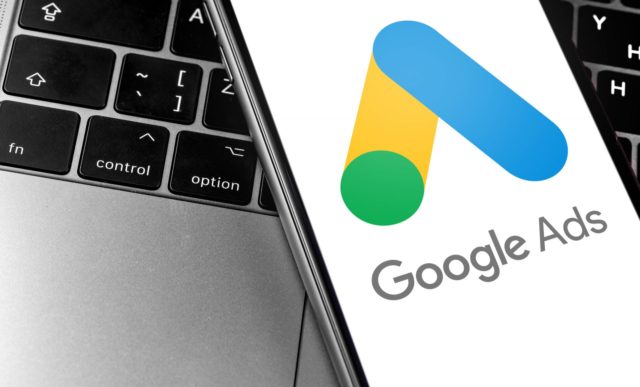First of all, what even is competitor brand bidding?
It’s a pretty simple act that can potentially have very large positives and negatives – the whole idea is based on using Search Ads targeted at an exact match variant of your competitions brand name – for example, Adidas bidding on the Nike brand and showing up at the top of the search results.
There are a few different reasons why you may want to bid on your competitors brand name;
To gain market share
If you’re a startup fresh in the market, your customers don’t know who you are yet – they’re not going to be searching for the name of your company or product. You know, however, that lots of people search for company A, B & C – your top competitors. These are the perfect customers and your ideal audience, so why not throw some cheeky competitor brand names into your ad groups and see if you can pull over some of that all-important market share.
To take advantage of a competitor closing business
If one of your competitors has ceased trading for whatever reason, lots of people will be searching for their brand name and soon after needing a new supplier! This can actually be a great use of competitor bidding as there’s very little downside. With the competitor no longer bidding, costs are likely to be low (unless other brands have the same idea!) meaning no large outset of cash and a low cost per acquisition. This is not likely to be a long term play, as customers become aware that the brand is no longer running, the search volume will die down. But keep an eye on your competition and be ready to pounce. You may see results like our client below generating 90 sales from new customers and returning x6.24 their ad spend when their top competitor closed down – this campaign ran over a 2 week period.

In retaliation
Now, it’s definitely not one that we’d suggest but we see it very often: one brand bidding on another’s brand name can lead to retaliation bidding and very quickly this can become a bit of a war. It’s an incredibly easy way to spend a lot of money on high CPC’s, generate low volumes of leads and overall get poor performance. If the competitor bidding on your brand name is of similar size to you or smaller, it’s potentially not worth getting involved in a war here – you’ll likely struggle with ever-rising CPC’s and CPA’s and not be able to make this run profitably.
How to get started
Getting started is easy, just jump into your Google Ads account and create a new search campaign – with this, it’s better to not include search partners so we can limit the scope of the bidding.
Campaign setup
In terms of campaign structure, we’d suggest creating one campaign to house all of your competitor targetings and then split each competitor into their own ad group. If you’ve got certain competitors that are much larger than others and have a much greater search volume, these brands are likely to hoover up a large amount of the daily budget allocated, so consider splitting them out into their own campaigns with individually allocated budgets.
Match Types
There’s lots of talk on match types and their uses nowadays with Google removing more and more of the granular differences. But with our competitor bidding campaign, we only need to consider two.
Phrase match: for prospecting of new long-tail keywords
Exact Match: for the juicy direct competitor bidding.

Bidding Strategies
When it comes to bidding strategies with competitor bidding, there are a few different options, and which one suits best will depend on the scope of your budget allocated to competitor targeting.
If you’re lucky enough to have unlimited budgets for your competitor bidding and have clear proof that you’re generating profitable sales or leads, then you can get pretty aggressive on the competitor targeting. By using Maximise Conversions (or Conversion Volume) you’re essentially telling Google to go out and get as many sales/leads as physically possible within the daily budget – you can also choose to set a target CPA or ROAS for this, to keep a lid on the efficiency.
If you’re feeling particularly adventurous with your competitor targeting, doing some experiments with Target Impression Share can reveal some very interesting results. Target Impression Share does exactly as the name suggests, but the main key here is that you can target a specific position on the page for the chosen impression share. Instead of aiming for the absolute top of the page, if you just want your brand name in the mix when users are looking for similar companies, then opt for the highest possible impression share you can afford to have your ad at the top of the page – which gets it in with the top 3-4 results.
What to look out for
While your campaigns are running, the majority of the optimisation comes in the form of reviewing your search terms report and adding negative keywords to your phrase match prospecting campaign. The Exact Match campaign will allow for some misspellings and variants, but shouldn’t throw up anything unexpected. Keep an eye on the results in your phrase match campaign and consider adding terms as negatives if impressions/clicks are high and conversions are low or zero.
Of course, the final and main thing to keep an eye on when campaigns are running is the actual leads or sales you’re generating. If you’re running eCommerce campaigns, it’s easy to look at your cost per sale, ROAS and ROI to ensure that you’re running profitably. With lead generation, it can sometimes be much more difficult to track value back to the initial lead form completed. Make sure you keep up with the MQL (marketing qualified lead) to SQL (sales qualified lead) conversion rate – or even better, MQL to customer %.
Conclusion
Choosing to jump in on a competitors brand name will mostly work in one direction; if you’re the smaller brand you’re likely in really good stead to start bidding on the competition and pulling in some cheap traffic with little to no downside.
If you’re a bigger brand or are looking at going against a brand that’s more evenly matched with you in terms of size, it can be a very expensive game and will not always lead to profit. If you’re still opting to run with competitor bidding, make sure to keep on top of your cost per acquisition and profitability metrics within the business to make sure you’re not burning cash on competitor keywords in an unprofitable pursuit!
If you want to learn more about competitor brand bidding, why not get in touch with one of our Paid Media experts?









